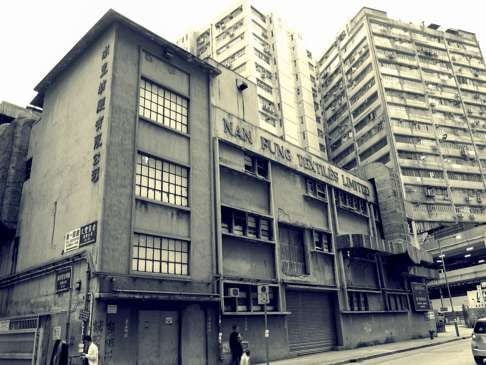
Mill revamp is cue for Hong Kong textile workers to reminisce, and upcycle
Hong Kong had a thriving garment making industry from the 1950s to the ’80s before rising costs drove it across the border. A heritage project in an old Tsuen Wan cotton mill hopes to recall those glory days
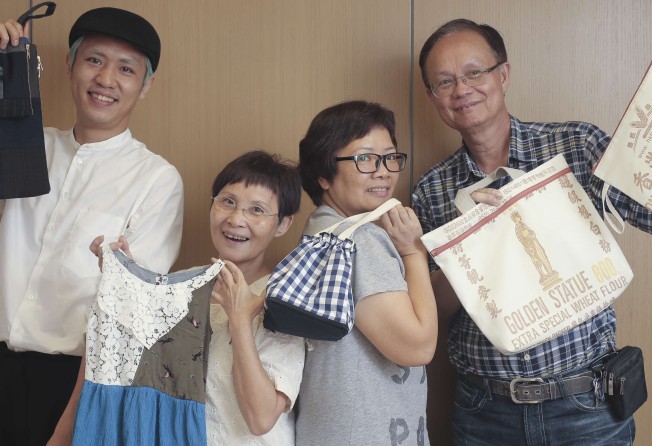
In a meeting room in Hong Kong’s Central district, 67-year-old Yip Mee-yung is like a child, bubbling with excitement, ready to show off her latest sewing projects. One is a colourful, strappy sundress made from discarded clothes, and on her smartphone are pictures of a young girl modelling the dress.
“It has a red triangular patch on the front so that the dress doesn’t look so boring,” she says. “It’s so much fun making new clothes out of old ones, and it’s environmentally friendly.”
Yip is participating in an upcycling project organised by Mill6 Foundation, a non-profit arts and cultural institution run by property developer Nan Fung Group.

According to Mill6 Foundation director Angelika Li On-ki, the aim is to preserve the city’s textiles and garment making culture, and foster creativity and new textile arts. The space will also host exhibitions.
Through the project, Yip has met others who worked in Hong Kong’s garment industry during its boom time between the 1950s and 1980s, before production was moved across the border to southern China amid rising labour costs. When they get together, the veteran garment workers inevitably start reminiscing.
Yip was 20 years old when she started working in a factory making denim clothing. “We had to run and grab what we wanted to sew from a box – it could be collars, pockets, jeans. We had to get the tickets attached to the bundles, because we needed those to get paid per piece,” she recalls.
“If you did simple jobs then you’d get paid less, but you could sew more of them. If you sewed the more complicated ones, you’d earn more, but it would take longer.”
She worked in the factory for about seven years until she became pregnant. With two children to raise, it wasn’t until Yip turned 50 that she went back to working at the factories, where she stayed until retirement.
She has been working in upcycling for the past four years . After retirement, she studied jewellery design at Baptist University. She became an entrepreneur, renting a stall and selling silver jewellery.
“I like making jewellery and upcycling too. See my ring? I made it,” she says, showing a thin copper wire wrapped around a pearl.
Sitting next to Yip is Kwok Hung-lin, who has made a small pile of soap pockets and bags from flour sacks. She’s 56 years old, but it’s hard to believe she was in the garment business for 40 years.
“I was 12 years old when I started working. I wasn’t academically good in school and there were six kids in the family. My mother thought going into the garment trade would be a good thing for me to do,” the youthful-looking Kwok recalls.
She made all kinds of clothing, including coats, from start to finish, and met her pattern maker husband Henry Cheung Chi-man, now 62, working in a To Kwa Wan factory.
He says his wife was so industrious that she returned to work only one month after giving birth to their son.
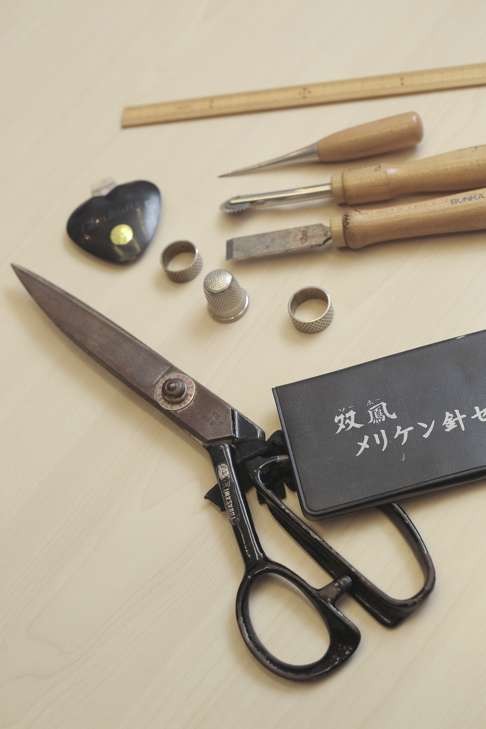
“I like doing alterations ... it makes people happy because they can wear their favourite clothing again,” Kwok says.
Kwok’s husband was 17 when he began an apprenticeship under a master pattern maker, because he was interested in the craft and also could earn more money than sewing garments.
However, Cheung recalls it was hard to find a master to work under because most were too busy to teach. Cheung helped out as much as he could, by ironing clothes and doing other menial tasks.
He built on his knowledge by taking night classes in Mong Kok and Kwun Tong, and by the time he was qualified to do the job, pattern makers were much in demand in the 1980s.
“When the factories began moving to [China], I followed them north. I went to Sha Wan in Shenzhen and didn’t know how long I would be there,” Cheung says. “But after six years, my wife and her younger brother started their wholesale business manufacturing clothes, and they suggested I quit working for other companies and work with them instead, managing the factory that made garments for them.”
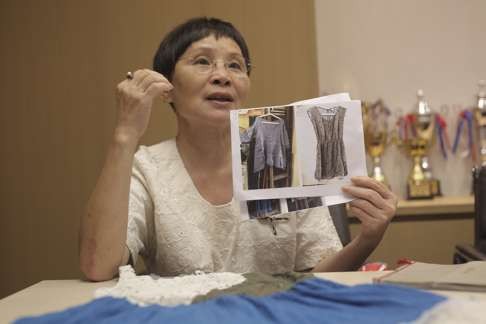
Their financial success was largely a result of their sheer hard work. Cheung recalls that they had to enlist his mother-in-law to look after their children. “We liked it but we did work hard,” he says.
At the time Cheung began working in China, the value of the yuan was much lower, as were salaries, which were 1,000 yuan (HK$1,160) to 1,500 yuan per month for garment workers. Nowadays such employees are paid 3,000 yuan more, making profit margins even slimmer, which is partly why he and Kwok quit the business altogether.
Asked if they find it hard to go shopping for clothes these days, the three garment factory veterans nod in agreement. “The first thing we do is inspect the fabric by feeling it,” says Cheung. “Clothes these days are not made with quality material, and they also find cheaper ways to make clothes, and with fewer seams,” he explains. “Things aren’t made to last like they used to.”
Nevertheless, they would rather use their knowledge and skills on projects they think are fun and worthwhile, like this one.
A few months ago, through Mill6 Foundation curator Lo Lok-him, the trio met Ken Hung Min-kin, 35, an avant garde fashion designer who wanted to learn pattern making, and in the process learned more about Hong Kong’s garment industry history.
“I want to learn things from them that aren’t found in textbooks. They have knowledge about many things I don’t know,” Hung says.
He holds up a pair of black pinstripe, wide-legged trousers he’s made that could be unisex, and immediately Yip praises the design and offers a few comments. Hung appreciates the feedback and encouragement she and Cheung give him.
In exchange, Hung suggests upcycling projects, such as finding material he had kept for a year that was perfect for soap bags for Kwok to sew, which required thinking about how they would be designed and sewn. The same goes for the bags made from flour sacks – which, Kwok explains, required washing several times to ensure all the leftover flour was thoroughly cleaned out.
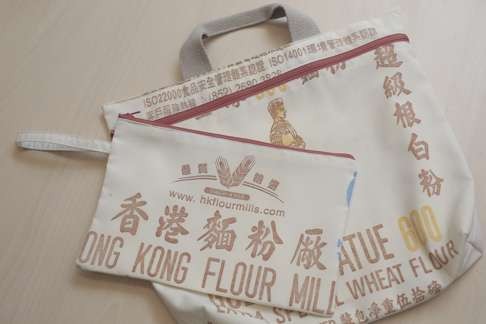
On a recent Saturday, curious Tsuen Wan residents checked out Mill6 Warm Up at the community space at Hau Tei Square Hawker Bazaar, where Yip demonstrated how she made slippers out of strips of old jeans and colourful plastic flowers from water bottles.
“We’ve done an upcycling project at the Blue House where we collected the old clothing of parents and turned them into new ones for their children,” says Yip, referring to the historic tenement block in Wan Chai.
“The clothes have more meaning because the parents used to wear them,” Hung adds.
Although Yip says the government doesn’t do enough to encourage recycling, she is still happy to play a small part through these sewing projects, which make her happy. “I get to learn new things every day.”